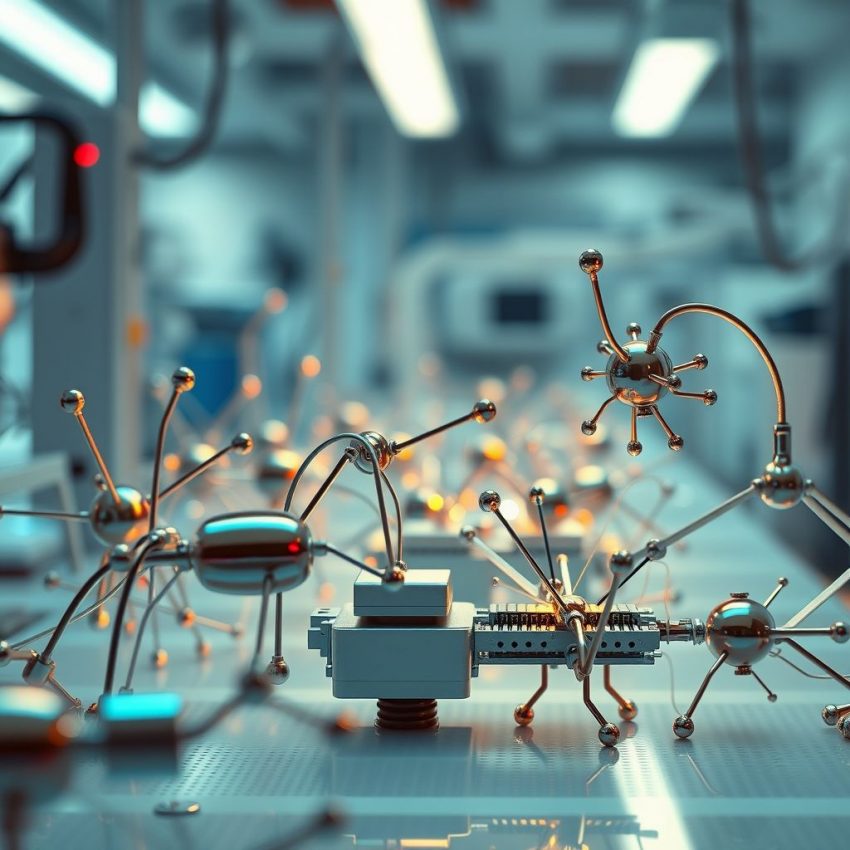Shape-Shifting Microrobots: The Future of Medicine and Manufacturing?
Imagine tiny robots, smaller than the width of a hair, capable of flowing like liquid through narrow channels and then, on command, solidifying into a specific, functional shape. This isn't science fiction; it's the groundbreaking reality of a new class of micro-robots being developed by scientists.
These remarkable micro-robots are poised to revolutionize fields ranging from medicine to manufacturing. Their ability to transition between liquid and solid states offers unprecedented adaptability and control, opening doors to applications previously thought impossible.
How do they work?
The secret lies in their composition and the ingenious use of magnetic fields. These micro-robots are typically constructed from ferromagnetic nanoparticles, meaning they respond to magnetic forces. By carefully manipulating external magnetic fields, researchers can precisely control the robots' movement and aggregation.
When a magnetic field is applied, the individual micro-robots attract each other, forming a cohesive structure, essentially acting like a solid. Switch off or alter the field, and the robots disperse, flowing like a fluid through complex environments. This "phase-shifting" ability is the key to their versatility.
Potential Applications:
The possibilities are truly exciting. Imagine:
- Targeted drug delivery: Microrobots could be injected into the bloodstream, navigate to a specific location like a tumor, solidify to deliver a concentrated dose of medication, and then disperse to be safely eliminated from the body.
- Minimally invasive surgery: These robots could be used to access hard-to-reach areas within the body, perform intricate procedures, and then dissolve, leaving minimal scarring.
- Adaptive materials: Imagine materials that can change their shape and properties on demand. These micro-robots could be embedded in materials, allowing them to morph into different configurations for various applications.
- Micro-manufacturing: Assembling complex microscopic devices could become significantly easier with micro-robots that can self-assemble into intricate structures.
Challenges and Future Directions:
While the potential is enormous, challenges remain. Researchers are working to improve the control and precision of these micro-robots, exploring new materials and magnetic control techniques. Biocompatibility is also a crucial factor for medical applications, requiring careful selection of materials and thorough testing.
Further research is needed to optimize the speed and efficiency of the shape-shifting process and to develop more sophisticated control systems. Imagine swarms of these micro-robots working in concert, performing complex tasks with incredible precision.
The Takeaway:
The development of these shape-shifting micro-robots is a giant leap forward in robotics and materials science. While still in the early stages of development, they hold the promise of transforming various industries and improving our lives in countless ways. This is a field to watch closely, as it's sure to yield even more astonishing breakthroughs in the years to come.
What are your thoughts on this exciting technology? Share your comments below!
Don’t miss out on this exclusive deal, specially curated for our readers! Unlock the power of advanced crypto trading with Bitfinex
This page includes affiliate links. If you make a qualifying purchase through these links, I may earn a commission at no extra cost to you. For more details, please refer to the disclaimer page. disclaimer page.

